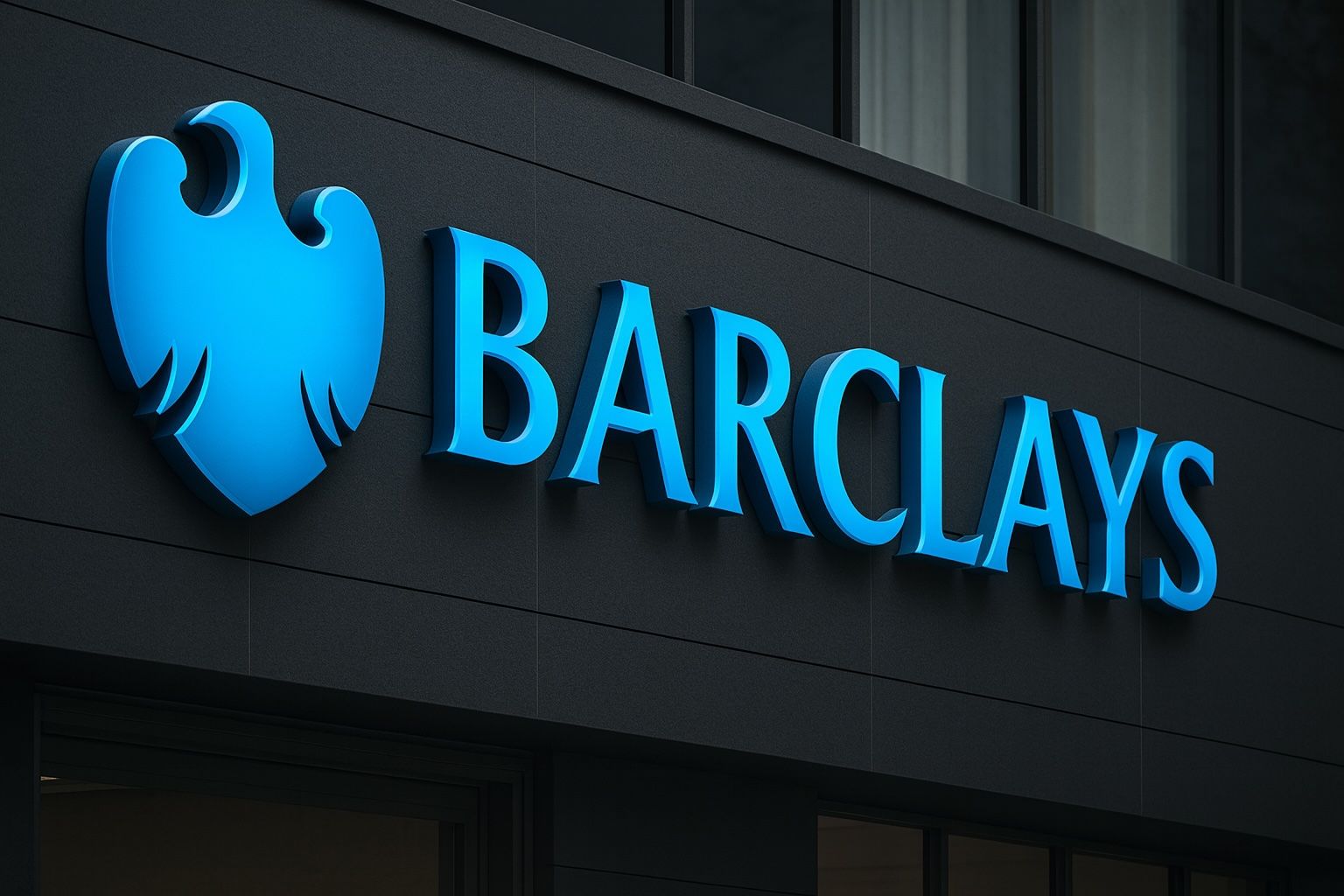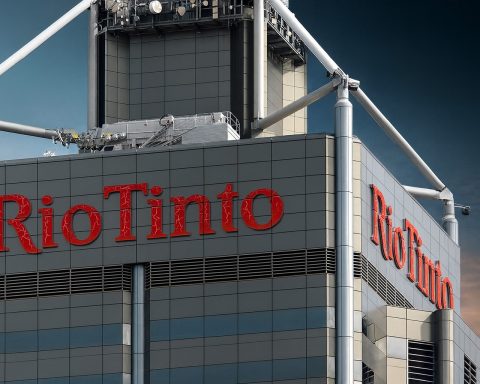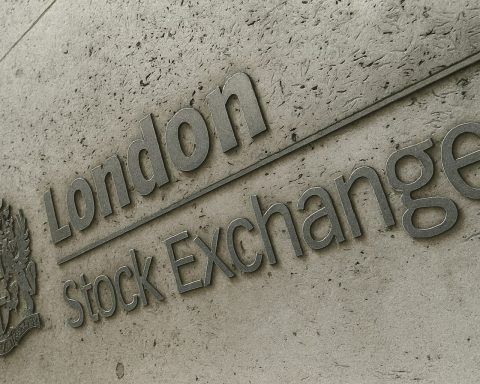Barclays PLC’s UK-listed shares (LON: BARC) eased lower on Friday, 21 November 2025, as a soft session for global equities and renewed worries about the UK economy offset support from the bank’s ongoing share buyback programme.
As of the market close on 21 November 2025, Barclays was trading around 391p, down roughly 1.7% on the day from Thursday’s close of 397.75p. [1]
Barclays share price today: key numbers at a glance
Based on data from London-focused price providers and major financial platforms, today’s session for Barclays PLC (BARC) looked roughly as follows: [2]
- Last price (close): ~391p
- Daily move: about –6.7p (–1.7%) vs Thursday’s close near 397.75p
- Intraday range: roughly 389.4p – 392.6p
- Opening price: about 391.85p
- Volume: c. 11.6–12.2 million shares, a touch below the recent average of around 12.4 million
- 52-week range: approximately 223.75p – 430.65p
- Market capitalisation: about £54bn
- Valuation snapshot:
Despite today’s pullback, Barclays remains up strongly over the past 12 months, with its share price having surged more than 50% year-on-year and recently touching multi-year highs above 430p. [5]
Why did the Barclays share price fall on 21 November 2025?
1. Risk-off mood hits global equities and UK banks
Today’s weakness in Barclays comes against a backdrop of a broader equity wobble:
- Global stocks have been under pressure amid concerns about stretched tech valuations and fading hopes for rapid rate cuts, with major indices such as the S&P 500 and Nasdaq notably lower. [6]
- UK-focused commentary highlights growing worries about the domestic economy. Fresh PMI data, weaker retail sales and softer consumer confidence have prompted talk of a “real chance of a downturn” even as markets price in more aggressive Bank of England rate cuts. [7]
For cyclical, rate-sensitive names like Barclays and other FTSE 100 banks, that mix is awkward:
- Slower growth raises fears about loan demand and credit quality.
- Faster rate cuts could compress net interest margins sooner than expected.
Barclays’ shares, which had already rallied sharply this year, are therefore vulnerable to bouts of profit-taking when macro headlines turn negative.
2. A pullback after multi-year highs and richening valuation
Over recent weeks, Barclays has been trading around its highest levels in roughly five years, prompting multiple pieces of commentary asking whether the Barclays share price still offers good value among UK banks. [8]
At the same time:
- Its price-to-book ratio around 0.7–0.75x is now close to the upper end of its post‑financial‑crisis range, having previously languished near 0.3x in late 2023. [9]
- That re‑rating reflects sustained improvements in return on tangible equity (RoTE) and earnings, but it also means less obvious “deep value” than investors enjoyed 12–18 months ago.
With sentiment fragile and the stock near recent highs, it doesn’t take much in the way of negative macro news to trigger a 1–2% down day like today.
3. UK macro data and Budget jitters
Fresh UK economic analysis published today underscores how:
- Composite PMI has slipped closer to stagnation,
- consumer confidence has dipped further into negative territory, and
- retail sales have surprised to the downside, partly as households delay purchases ahead of Black Friday. [10]
The government’s upcoming Budget is expected to outline higher tax rises amid a challenging borrowing backdrop, with October borrowing overshooting forecasts. [11]
For Barclays, that combination matters because:
- Slower growth and squeezed consumers can lead to higher impairments and slower loan growth.
- However, expectations of multiple rate cuts through 2026 could eventually ease funding costs and support valuations for quality banks.
Today, markets appear more focused on the near-term growth risk than the longer-term support from lower rates, weighing on BARC.
All the key Barclays PLC news dated 21 November 2025
While there was no fresh trading update or profit warning from Barclays today, there was a flurry of regulatory and capital markets activity. Here are the most relevant items dated 21 November 2025.
1. Ongoing share buyback: new “Transaction in Own Shares” RNS
Barclays released a Transaction in Own Shares announcement via the London Stock Exchange’s RNS service: [12]
- On 20 November 2025, the bank repurchased 2,741,915 ordinary shares on the London Stock Exchange.
- The highest price paid was about 405.35p per share, the lowest roughly 398.50p, and the volume‑weighted average price (VWAP) was around 401.18p.
- All those shares are being cancelled, reducing the overall share count.
- Since the buyback began on 30 July 2025, Barclays has bought back roughly 251.4 million shares at an average price just under 381p, leaving total issued share capital at around 13.92 billion ordinary shares with voting rights.
This £500m buyback was first highlighted alongside Q3 2025 results, where Barclays reported: [13]
- RoTE of 10.6% for Q3 and 12.3% year-to-date,
- upgraded 2025 RoTE guidance to >11%, and
- strong earnings per share of about 35p year‑to‑date.
Today’s buyback disclosure therefore reaffirms management’s confidence in the balance sheet and valuation, even as the share price drifts lower intraday.
2. Form 8.5 disclosures under the UK Takeover Code
Barclays also appeared in the regulatory news flow through Form 8.5 (EPT/Non‑RI) disclosures, filed as an exempt principal trader under the UK Takeover Code. [14]
One such filing, dated 21 November 2025, details:
- Significant purchases and sales of American Axle & Manufacturing Holdings shares,
- including over 200,000 shares bought and a similar number sold,
- at prices between roughly $5.83 and $6.18.
These disclosures do not relate to Barclays’ own equity, but they underline the bank’s active role in market‑making and deal‑related trading for clients involved in takeover situations. They are mainly of interest to specialists tracking M&A flows rather than everyday retail shareholders.
3. Multiple SEC filings for new structured products
In the United States, Barclays Bank PLC (the group’s wholesale and investment banking arm) filed several Form 424B2pricing supplements and related documents today for new structured notes. Highlights include: [15]
- Market‑linked notes tied to major US equity ETFs such as DIA, QQQ and SPY,
- Principal‑at‑risk notes linked to the Class A common stock of Robinhood Markets, Inc.,
- securities referencing Royal Caribbean Cruises and baskets of US tech names like Dell, Intel and Micron, and
- multi‑index products linked to the Russell 2000®, S&P 500® and EURO STOXX 50® with contingent coupons and downside protection features.
These transactions:
- Expand Barclays’ structured products franchise,
- generate fee income, and
- further diversify the bank’s funding mix.
They rarely move the London‑listed BARC share price on a given day, but they are an important part of the group’s capital markets and investment banking earnings.
4. Other market-related mentions
Barclays was also referenced today in broader market commentary, including:
- Coverage of UK and European equity declines that noted Barclays among the FTSE 100 fallers, with BARC down around 1.6–1.7% intraday. [16]
- Trading notes on a Barclays-issued ETN (ATMP), where price action in the US‑listed product was being used as a signal within certain institutional trading models. [17]
Again, these aren’t company‑specific bombshells, but they form part of the day’s news backdrop around Barclays.
How does Barclays look after today’s move?
Still cheaper than book, but the discount has narrowed
Even after its strong 2025 rally, Barclays still trades below its book value per share, with a price‑to‑book ratio of roughly 0.7–0.75x based on recent data. [18]
Key points:
- Historically, the market has often valued Barclays at a steeper discount to book, especially during periods of restructuring or heightened misconduct fines.
- Today’s multiple, however, is much richer than the 0.3–0.4x range seen in late 2023, reflecting improved profitability and investor confidence.
Earnings power and shareholder returns
Recent results and analyst data point to: [19]
- RoTE in the low double‑digits (10–12% range), in line with or above management’s medium‑term targets.
- A single‑digit P/E ratio (around 7–8x normalised earnings).
- A cash dividend in the low‑single‑digit yield range, but supplemented by meaningful buybacks (current buyback yield close to 4%), delivering a total shareholder yield comfortably above 6%.
For many institutional investors, that combination of:
- Solid double‑digit returns on tangible equity,
- A discount to book, and
- High shareholder payout
is precisely what has driven the recent re‑rating of UK bank shares – including Barclays – off their 2023 lows.
What could move the Barclays share price next?
Looking beyond today’s 1.7% pullback, several catalysts could influence where the Barclays share price goes from here:
- UK Autumn Budget (next week):
- A tougher‑than‑expected tax and spending mix could deepen growth worries and hit domestic bank valuations.
- Conversely, business‑friendly measures might support sentiment, especially after Barclays’ own research recently highlighted that many UK firms are “on pause” but ready to invest if policy turns more supportive. [20]
- Bank of England decisions:
- Markets now see a high probability of a rate cut in December, with more easing in 2026. [21]
- For Barclays, a gradual path of cuts could be manageable, but a sharp reversal in rates would likely pressure margins.
- Strategic update and potential M&A:
- Commentators have speculated that Barclays could pursue acquisitions, such as specialist mortgage lender OSB, to rebalance its mix away from the investment bank – or even find itself a target for larger global rivals. [22]
- A planned strategic update in early 2026 (including new 2028 targets) could therefore be a significant share‑price event.
- Credit quality and impairments:
- Any signs that UK households or corporates are struggling more than expected in a slower economy would likely be punished by the market.
- On the flip side, continued stability in arrears and low impairment charges would strengthen the case for Barclays’ current valuation.
- Global risk appetite:
- As today’s session showed, Barclays is not immune to global risk‑off episodes, especially those tied to US tech and broader equity volatility. [23]
What today’s move may mean for investors (not advice)
For existing shareholders, today’s 1–2% drop:
- Looks more like normal volatility and profit‑taking after a powerful rally than a fundamental re‑rating event.
- Comes on a day when management is still actively buying back stock at prices slightly above today’s level, which many will interpret as a signal of confidence. [24]
For would‑be investors, the picture is more nuanced:
- The valuation case is less obviously “cheap” than it was at the end of 2023, but
- the shares continue to trade at a discount to book, with solid RoTE and a meaningful combined dividend and buyback yield. [25]
As always, whether Barclays is attractive at around 391p will depend on:
- Your view of the UK macro outlook and interest‑rate path,
- your tolerance for banking‑sector risk, and
- how you balance Barclays against other UK or global financial stocks in a diversified portfolio.
This article is for information only and is not investment advice. Anyone considering buying or selling Barclays shares should do their own research or consult a regulated financial adviser.
References
1. www.investing.com, 2. www.investing.com, 3. uk.investing.com, 4. stockanalysis.com, 5. www.investing.com, 6. www.investing.com, 7. uk.investing.com, 8. www.fool.co.uk, 9. finbox.com, 10. uk.investing.com, 11. uk.investing.com, 12. www.investegate.co.uk, 13. www.investegate.co.uk, 14. www.investments.halifax.co.uk, 15. www.stocktitan.net, 16. uk.investing.com, 17. news.stocktradersdaily.com, 18. uk.investing.com, 19. www.investing.com, 20. home.barclays, 21. uk.investing.com, 22. www.reuters.com, 23. www.investing.com, 24. www.investegate.co.uk, 25. www.gurufocus.com







